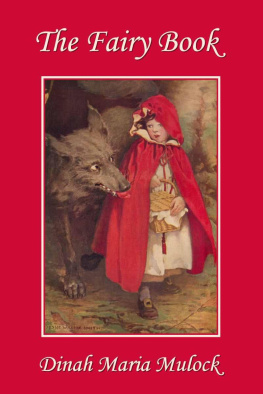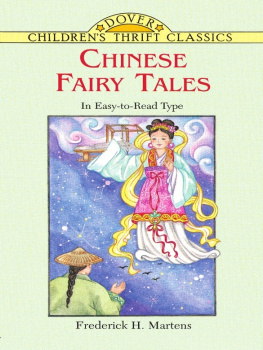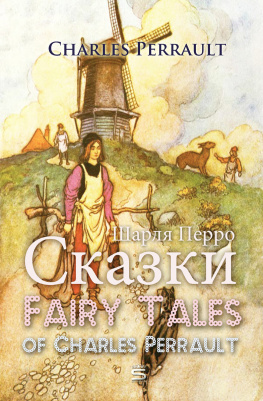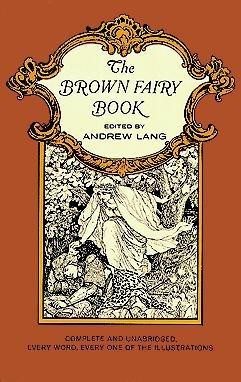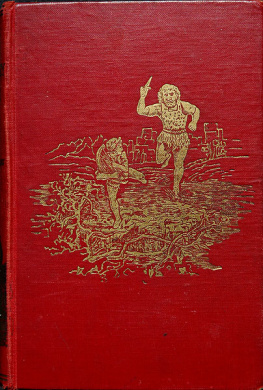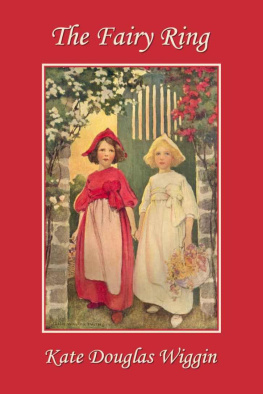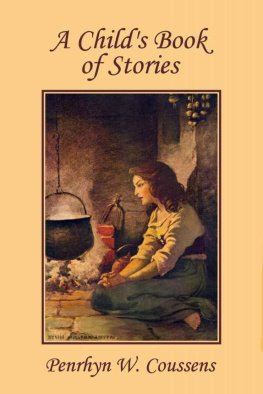The Fairy Book
by
Dinah Maria Mulock
Yesterday's Classics
Chapel Hill, North Carolina
Cover and Arrangement 2010 Yesterday's Classics, LLC
All rights reserved. No part of this book may be reproduced or retransmitted in any form or by any means without the written permission of the publisher.
This edition, first published in 2010 by Yesterday's Classics, an imprint of Yesterday's Classics, LLC, is an unabridged republication of the work originally published by Harper & Brothers in 1876. This title is available in a print edition (ISBN 978-1-59915-154-0).
Yesterday's Classics, LLC
PO Box 3418
Chapel Hill, NC 27515
Yesterday's Classics
Yesterday's Classics republishes classic books for children from the golden age of children's literature, the era from 1880 to 1920. Many of our titles are offered in high-quality paperback editions, with text cast in modern easy-to-read type for today's readers. The illustrations from the original volumes are included except in those few cases where the quality of the original images is too low to make their reproduction feasible. Unless specified otherwise, color illustrations in the original volumes are rendered in black and white in our print editions.
Preface
A preface is usualy an excrescence on a good book, and a vain apology for a worthless one; but in the present instance, a few explanatory words seem necessary.
This is meant to be the best collection attainable of that delight of all children, and of many grown people who retain the child-heart stillthe old-fashioned, time-honored classic Fairy-tale. It has been compiled from all sourcesfar-off and familiar; when familiar, the stories have been traced with care to their original form, which, if foreign, has been retranslated, condensed, and in any other needful way made suitable for modern British children. Perrault, Madame d'Aulnois, and Grimm have thus been laid under contribution. Where it was not possible to get at the original of a tale, its various versions have been collated, compared, and combined; and in some instances, when this proved still unsatisfactory, the whole story has been written afresh. The few English fairy tales extant, such as Jack the Giant Killer, Tom Thumb , etc., whose authorship is lost in obscurity, but whose charming Saxon simplicity of style, and intense realism of narration, make for them an ever-green immortalitythese have been left intact, for no later touch would improve them. All modern stories have been excluded.
Of course, in fairy tales, instruction is not expected; we find in them only the rude moral of virtue rewarded and vice punished. But chilren will soon discover for themselves that in real life all beautiful people are not good, nor all ugly ones wicked; that every elder sister is not ungenerous, nor every stepmother cruel. And the tender baby-heart is often reached quite as soon by the fancy as by the reason. Nevertheless, without any direct appeal to conscience or morality, the Editor of this collection has been especially careful that there should be nothing in it which could really harm a child.
She trusts that, whatever its defects, the Fairy Book will not deserve one criticism, almost the sharpest that can be given to any work"that it would have been better if the author had taken more pains."
Contents
The Sleeping Beauty in the Wood
O NCE there was a royal couple who grieved excessively because they had no children. When at last, after long waiting, the queen presented her husband with a little daughter, his majesty showed his joy by giving a christening feast, so grand that the like of it was never known. He invited all the fairies in the landthere were seven altogetherto stand godmothers to the little princess; hoping that each might bestow on her some good gift, as was the custom of good fairies in those days.
After the ceremony, all the guests returned to the palace, where there was set before each fairy-godmother a magnificent covered dish, with an embroidered table-napkin, and a knife and fork of pure gold, studded with diamonds and rubies. But alas! as they placed themselves at table, there entered an old fairy who had never been invited, because more than fifty years since she had left the king's dominion on a tour of pleasure, and had not been heard of until this day. His majesty, much troubled, desired a cover to be placed for her, but it was of common delf, for he had ordered from his jeweller only seven gold dishes for the seven fairies aforesaid. The elderly fairy thought herself neglected, and muttered angry menaces, which were overheard by one of the younger fairies, who chanced to sit beside her. This good godmother, afraid of harm to the pretty baby, hastened to hide herself behind the tapestry in the hall. She did this, because she wished all the others to speak firstso that if any ill gift were bestowed on the child, she might be able to counteract it.
The six now offered their good wisheswhich, unlike most wishes, were sure to come true. The fortunate little princess was to grow up the fairest woman in the world; to have a temper sweet as an angel; to be perfectly graceful and gracious; to sing like a nightingale; to dance like a leaf on a tree; and to possess every accomplishment under the sun. Then the old fairy's turn came. Shaking her head spitefully, she uttered the wish that when the baby grew up into a young lady, and learned to spin, she might prick her finger with the spindle and die of the wound.
At this terrible prophecy, all the guests shuddered; and some of the more tender-hearted began to weep. The lately happy parents were almost out of their wits with grief. Upon which the wise young fairy appeared from behind the tapestry, saying cheerfully, "Your majesties may comfort yourselves; the princess shall not die. I have no power to alter the ill-fortune just wished her by my ancient sisterher finger must be pierced; and she shall then sink, not into the sleep of death, but into a sleep that will last a hundred years. After that time is ended, the son of a king will find her, awaken her, and marry her."
Immediately all the fairies vanished.
The king, in the hope of avoiding his daughter's doom, issued an edict, forbidding all persons to spin, and even to have spinning-wheels in their houses, on pain of instant death. But it was in vain. One day, when she was just fifteen years of age, the king and queen left their daughter alone in one of their castles, when, wandering about at her will, she came to an ancient donjon tower, climbed to the top of it, and there found a very old womanso old and deaf that she had never heard of the king's edictbusy with her wheel.
"What are you doing, good old woman?" said the princess.
"I'm spinning, my pretty child."
"Ah, how charming! Let me try if I can spin also."
She had no sooner taken up the spindle than, being lively and obstinate, she handled it so awkwardly and carelessly that the point pierced her finger. Though it was so small a wound, she fainted away at once, and dropped silently down on the floor. The poor frightened old woman called for help; shortly came the ladies in waiting, who tried every means to restore their young mistress, but all their care was useless. She lay, beautiful as an angel, the colour still lingering in her lips and cheeks; her fair bosom softly stirred with her breath: only her eyes were fast closed. When the king her father and the queen her mother beheld her thus, they knew regret was idleall had happened as the cruel fairy meant. But they also knew that their daughter would not sleep for ever, though after one hundred years it was not likely they would either of them behold her awakening. Until that happy hour should arrive, they determined to leave her in repose. They sent away all the physicians and attendants, and themselves sorrowfully laid her upon a bed of embroidery, in the most elegant apartment of the palace. There she slept and looked like a sleeping angel still.

